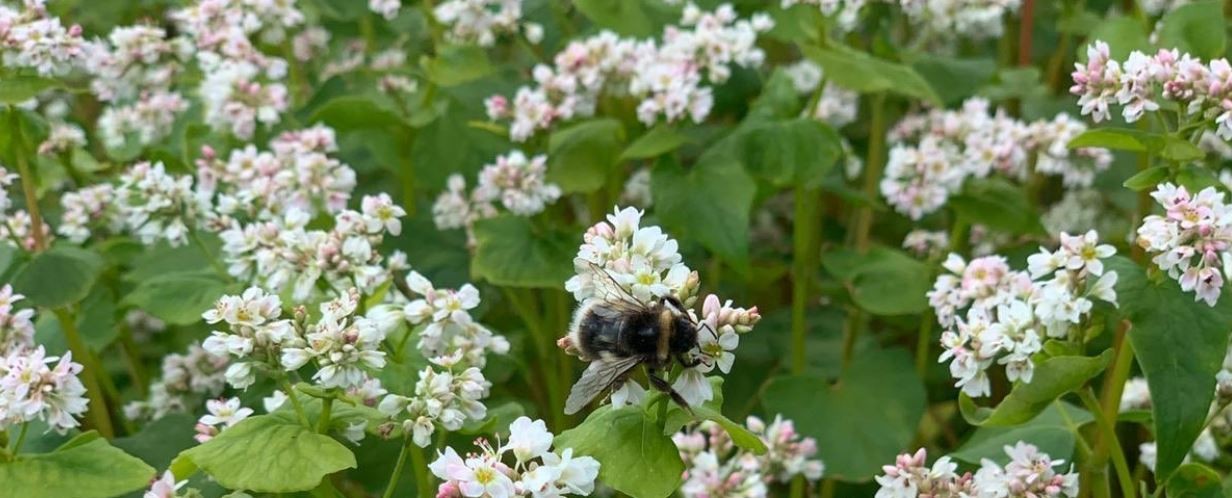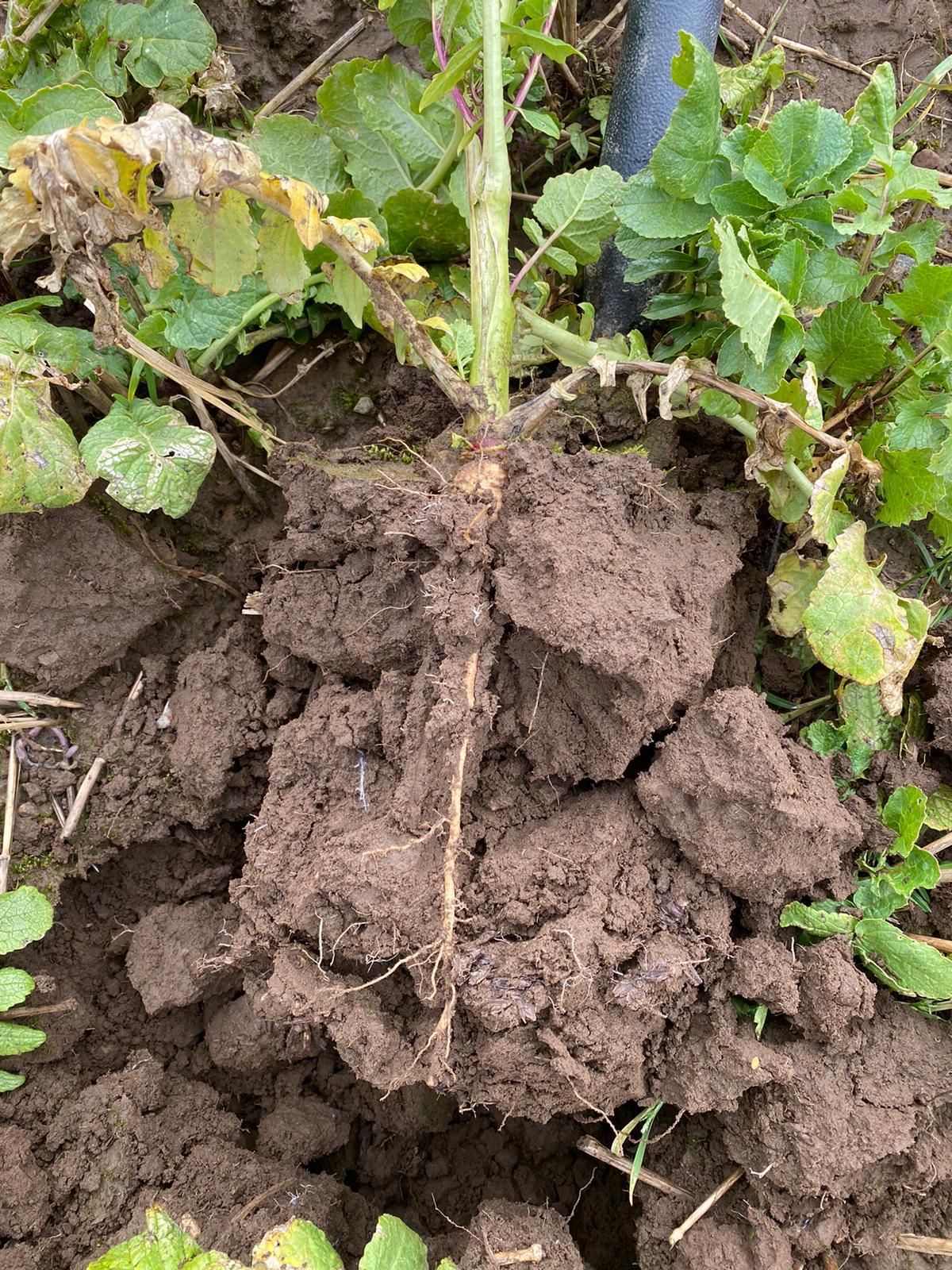A role for catch and cover crops in soil management?
In the second blog of this soil management series, we review how catch and cover crops can play an integral role in post-harvest soil management, including the options available and how their inclusion can support stewardship. The first blog in this series focussed on pre-harvest soil management and you can read it here.
Our knowledge from the Sustainable Farming Incentive (SFI) pilot indicates we all need to think about how we go about soil management planning. There's a shift in focus to not leaving soils bare over-winter; instead, the norm is to improve and maintain soil cover and structure in a bid to enhance soil health.
One way to do this is by including catch and cover crops – both have several advantages and play different roles depending on the result you need for your soil.
What are the benefits to catch and cover crops?
Before going into detail about the options, I just want to reiterate the wider benefits of including a catch or cover crop in rotations when it comes to protecting the soil. Firstly is their role in soil stabilisation. By planting cover crop species, you're protecting the soil ready for drilling in the spring; particularly over periods of excess winter rainfall. There's also an opportunity to support natural soil restructuring, such as when planting radish-type species.
Further benefits to the soil structure include returning organic matter to depth, by planting deep root systems, as well as returning more biomass on the surface. Again, both are species dependent.
To add to this, inclusion of catch or cover crops can help retain nutrients, which are returned to the soil for future crops to utilise, as well as supporting carbon capture. Working with a number of farmers last autumn, we took fresh weight cut downs indicating between 40 and 100kg of nitrogen/ha had been taken up by the cover crop; with results varying depending on soil type, previous cropping and cover crop establishment.
Nutrient retention and subsequent availability is an area which does require more information, such as how long this takes to achieve and so which following crops would benefit. At Kings, we're working with growers on a farm project to understand exactly when and what nutrients are released. The results from this will help inform us in future.
Another positive could be the impact on nematodes and other soil pests. We are building evidence of this by working with a small number of growers to better understand best practice sampling for free living nematodes, how specific cover crops could help in controlling targets species such as root lesion and stubby root nematodes, and looking to see if there are yield benefits.
How to choose the option for you
Expert advice is essential in making the decision. By working with your agronomist and utilising the features available within Frontier's MyFarm platform, such as MySOYL's data analysis tools, you can better explore where cover or catch crops offer most benefit.
When deciding which route to go, the first question to ask yourself is: what are you trying to achieve?
There are several factors which must be considered:
- Are you looking to improve soil structure?
- Do you need to provide additional grazing for livestock? Is grassweed control the priority?
- Is there enough time to plan, purchase and plant a crop while in the midst of harvest? If so, you could consider a catch crop. If more time is needed, then a cover crop could be the solution.
- What's the topography and soil type?
- Is there wider support such as stewardship schemes or grants from local water companies which can influence species choice?
Once you know these answers, you can then choose what to grow – whether it be a single crop or a multi-species mix.
Catch crop options
Catch crops are a short-term solution. They are quick to establish in an eight to 12 week window, with options including radish, mustard or buckwheat.
They're planted between two main crops in one season, and therefore need to be drilled by mid-August. For a successful crop, drilling date is essential, sowing the right seed, at the right rate, at the right time.
Cover crop options
I'd encourage growers to consider cover crops as a longer-term component of the farm rotation. They offer good break options for grassweed control as well as agronomic benefits such as increasing organic matter levels, capturing vital nutrients and improving soil structure.
Consider buckwheat, oats or forage rye – the latter is good when requiring additional grazing for livestock.
For black-grass management I'd point to the two-year legume fallow AB15 option in Countryside Stewardship. The mixture can contain red clover, common vetch, birdsfoot trefoil and common knapweed, with the ability to include grasses such as Timothy if required. Early establishment after harvest is key and when done well this approach will improve soil health, help control grassweeds and deliver for pollinators and beneficial insects.
How should you deal with cover crops at the end of their use period?
This is a question which is farm, and even field, specific.
There are several ways to remove the crop at the end of use. You can opt to spray the crop off in the new year before establishing a commercial spring crop, or there is work on establishing the cereal on 'the green'. Again, there are a series of questions which need to be considered before making the decision and we'll cover these in a blog later in the year.
Taking a whole-farm approach
As a result of recent agricultural policy changes, environmental management is now key for all UK farms. Legislation is heavily focussed on shaping a sustainable and resilient farmed landscape and, while some growers may have already started this journey, many are just taking their first steps.
At Kings, we work closely with experts from SOYL and Frontier's sustainable crop production team and together we have developed a sustainability model to support growers through this transition.
The model comprises seven key focus areas, two of which cover 'soil function' and 'environmental management'. Of course, these can mean different things to different farms and while they are equally important in their own right, as highlighted in this blog, they are also intrinsically linked.
You can learn more about these focus areas and how we're supporting growers with sustainable crop production here.
If you would like further advice or recommendations, please speak to your local Kings, Frontier or SOYL contact.
As a subscriber, you’ll receive email alerts each time a new blog is published so you can always stay updated with the latest advice and insights from our experts









Comments